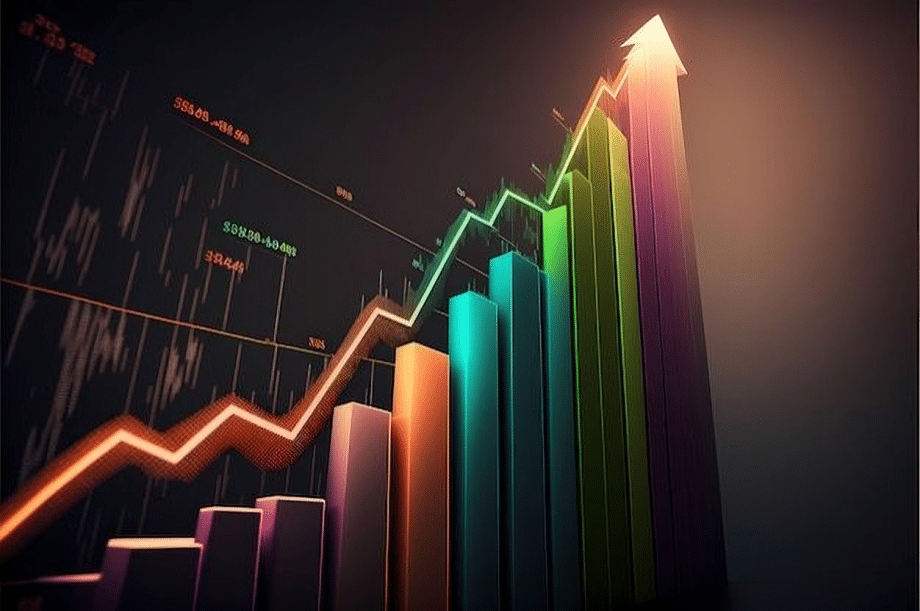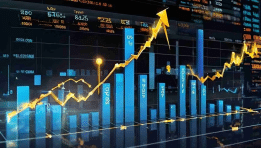As of April 2025, the S&P 500 has dropped more than 15% year-to-date. Such a decline might sound alarming to the general public—and even to seasoned investors—but historical patterns reveal that this is far from unprecedented, and certainly not a death sentence for the market. In fact, deep corrections of this nature have occurred multiple times since the 1950s, often followed by remarkable rebounds. These episodes provide important insights into market psychology, macroeconomic policy, and investor behavior.
Data compiled by Carson Investment Research shows that since 1950, there have been 17 years in which the S&P 500 declined by more than 15% at some point during the calendar year. These declines span a variety of decades and economic environments, from the post-war era to the digital age. Interestingly, in several of these years, the market not only recovered but ended the year with strong gains. What explains this divergence in outcomes? Are there recurring patterns? And what can we learn about the rest of 2025—and the years to follow?
What All These Years Had in Common: Economic Stress and Negative Sentiment
A close examination of these down years reveals a common theme: significant economic or geopolitical stress, often accompanied by deteriorating investor confidence. Whether it’s a financial crisis, inflation shock, war, bursting tech bubble, or global pandemic—each of these instances was marked by a sense of uncertainty and fear.
Take the years 1973 and 1974, for example. The Yom Kippur War and the ensuing oil embargo sent energy prices soaring and led to stagflation in the U.S. economy. Inflation was high, growth was stagnant, and monetary policy was still adapting. The S&P 500 declined by over 36% in 1974 alone, and nearly 50% over the course of those two years.
A similar story unfolded in 2001–2002. The dot-com bubble burst, wiping out trillions in market value, and was followed by the 9/11 terrorist attacks. Technology stocks collapsed, and the broader market followed suit, suffering back-to-back years of significant losses.
The financial crisis of 2008 was arguably the most severe market event since the Great Depression. Lehman Brothers collapsed, the housing market imploded, and global credit markets froze. That year, the S&P 500 fell nearly 49% from its peak and finished the year with a loss of 38.5%.
These events remind us that deep market drawdowns almost never happen in a vacuum—they are typically a reaction to serious macroeconomic or systemic shocks.
Not All Declines End Badly – When the Market Bounced Back Sharply
While some years ended in deep red, others saw stunning turnarounds. Three years stand out in particular: 1982, 2009, and 2020. In each of these cases, after an intra-year drop of between 16% and 30%, the market reversed course and posted strong year-end gains—+14.8%, +23.5%, and +16.3%, respectively.
In 1982, the U.S. was mired in a deep recession with persistently high inflation. After years of aggressive monetary tightening under Fed Chair Paul Volcker, the Federal Reserve finally pivoted and began cutting interest rates. As inflation started to come under control, investors returned to equities, confident that the worst was behind them.
In 2009, markets found a bottom in March after months of free fall during the financial crisis. The U.S. government introduced the TARP bailout plan, and the Federal Reserve slashed interest rates to near zero. The policy response restored some level of trust in the financial system, and markets began a powerful multi-year bull run.
The 2020 pandemic crash was perhaps the most abrupt market collapse in modern history. Within weeks, major indices fell more than 30% as lockdowns began. Yet the U.S. government responded with unprecedented fiscal stimulus—including direct payments to individuals—and the Fed provided massive monetary support. Markets rebounded almost as quickly as they fell, with the S&P 500 recovering to pre-pandemic levels within months.
The common denominator in these recoveries is clear: aggressive, coordinated intervention from monetary and fiscal authorities, along with a shift in narrative that helped restore investor confidence.
How Long Did It Take the Market to Recover?
While bear markets often feel like they will never end, the reality is that U.S. equities tend to recover faster than people expect. In 2008, one of the worst market crashes in history, the S&P 500 took about four years to fully recover. But in other instances, such as in 2009 and 2020, the market rebounded within 12 to 18 months—or even faster.
In contrast, during the stagflation years of the 1970s, recovery was slower. It took years to break the back of inflation and restore real economic growth, and as a result, equity markets languished for extended periods. The early 2000s saw a similar pattern, with the market taking until 2007 to reclaim its 2000 peak.
What we learn from this is that the speed of recovery depends heavily on the nature of the crisis and the response to it. Monetary and fiscal policy are pivotal—more than the scale of the initial decline itself.
Is 2025 Similar to Past Cases?
As of April 2025, the market is down 15.3% year-to-date. The causes appear to be a mix of persistent inflation, slowing economic growth, political uncertainty ahead of the U.S. presidential election, and concern over whether the Federal Reserve will shift its policy stance.
While 2025 does not feature a clear, singular crisis like in 2008 or 2020, it does reflect a broader environment of anxiety and fatigue. The market has enjoyed strong gains in previous years, and now faces questions about valuation, interest rates, and the limits of economic growth under tightening credit conditions.
The key question is whether the Fed and policymakers will step in to support markets or continue to prioritize inflation-fighting efforts. Should inflation moderate and rate cuts become a real prospect in the second half of the year, markets may regain their footing. Otherwise, the S&P 500 could continue to struggle.
Future Outlook – Not Every Drop Is a Forecast of Doom
For long-term investors, it’s essential to understand that market volatility and corrections are not only normal—they are necessary. They flush out excess, reset valuations, and ultimately create opportunities for future gains. Historically, years that began with heavy losses have often been followed by strong rallies—if conditions improved and confidence was restored.
But it is not enough to rely on hope. One must examine the macroeconomic backdrop: Are central banks shifting policy? Are corporate earnings stabilizing? Is economic data improving? These are the markers that determine whether a downturn is a temporary shock or part of a broader structural decline.
For investors with a long time horizon, sharp corrections such as the one in 2025 can present rare buying opportunities. However, this requires discipline, diversification, and alignment with one’s personal risk profile. Reacting emotionally—selling at the bottom or chasing rebounds—is usually a recipe for underperformance.
Conclusion
Historical data doesn’t predict the future, but it does offer perspective. The fact that the S&P 500 has dropped more than 15% in 2025 isn’t unprecedented. What matters now is how policymakers, markets, and investors respond. If past is prologue, the market could recover strongly if certain conditions align.
The path forward will depend not on how far we’ve fallen—but on what we do next. Investors who stay grounded, informed, and focused on the long term are often those who emerge strongest from these turbulent periods.
Comparison, examination, and analysis between investment houses
Leave your details, and an expert from our team will get back to you as soon as possible
* This article, in whole or in part, does not contain any promise of investment returns, nor does it constitute professional advice to make investments in any particular field.
To read more about the full disclaimer, click here- orshu
- •
- 10 Min Read
- •
- ago 1 hour
 Merck Reports Mixed Results in Q2 2025; Focuses on Innovation and Strategic Optimization
Merck Reports Mixed Results in Q2 2025; Focuses on Innovation and Strategic Optimization
Merck & Co., Inc. (NYSE: MRK), known as MSD outside the United States and Canada, released its financial results for
- ago 1 hour
- •
- 10 Min Read
Merck & Co., Inc. (NYSE: MRK), known as MSD outside the United States and Canada, released its financial results for
- orshu
- •
- 10 Min Read
- •
- ago 1 hour
 Spotify Q2 2025 Shareholder Report
Spotify Q2 2025 Shareholder Report
Accelerated User Growth, Financial Records, and Global Product Expansion Spotify has released its quarterly report for Q2 2025, showing strong
- ago 1 hour
- •
- 10 Min Read
Accelerated User Growth, Financial Records, and Global Product Expansion Spotify has released its quarterly report for Q2 2025, showing strong
- orshu
- •
- 7 Min Read
- •
- ago 3 hours
 European Markets Edge Higher Amid Relief – What Does the New Tariff Agreement Really Mean?
European Markets Edge Higher Amid Relief – What Does the New Tariff Agreement Really Mean?
Modest Gains Following New Trade Deal On Tuesday, July 29, 2025, the leading European stock exchanges recorded moderate gains, following
- ago 3 hours
- •
- 7 Min Read
Modest Gains Following New Trade Deal On Tuesday, July 29, 2025, the leading European stock exchanges recorded moderate gains, following
- orshu
- •
- 10 Min Read
- •
- ago 3 hours
 PayPal Shows Stability: Strong Q2 Performance with Growth in Revenue and Profit
PayPal Shows Stability: Strong Q2 Performance with Growth in Revenue and Profit
PayPal Holdings released its financial results for the second quarter of 2025, reporting solid improvements in both revenue and profitability.
- ago 3 hours
- •
- 10 Min Read
PayPal Holdings released its financial results for the second quarter of 2025, reporting solid improvements in both revenue and profitability.












